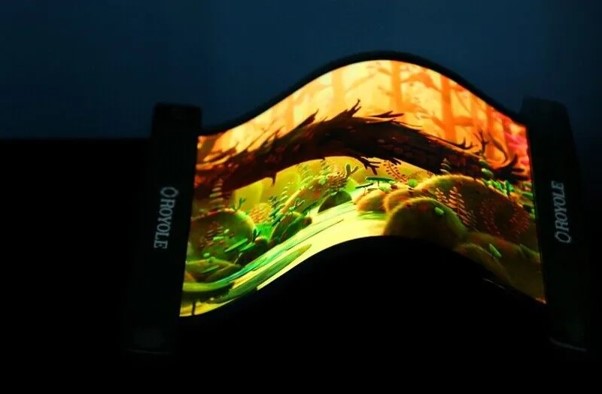This article explores the importance of PVD for display technology, and how the design of PVD systems are crucial for the development of new products and the production of affordable consumer electronics.
Thin-Film Transistors (TFTs) are integral components in modern electronic displays, enabling the precision control of pixels in technologies such as liquid crystal displays (LCDs), organic light-emitting diodes (OLEDs), and emerging flexible electronics. With the demand for higher resolution, faster refresh rates, and improved energy efficiency, the role of TFTs has expanded beyond displays into wearables, smart glass, and even photovoltaic devices.[1]
This article explores the scientific principles behind TFTs, the role of Physical Vapor Deposition (PVD) in their fabrication, and how Nikalyte’s NEXUS and NL-FLEX PVD systems contribute to the development of next-generation TFTs.
Understanding Thin-Film Transistors (TFTs)
A Thin-Film Transistor (TFT) is a type of field-effect transistor (FET) fabricated by depositing a thin layer of semiconductor material onto a substrate, typically glass, plastic, or other flexible materials. The semiconductor layer is typically amorphous silicon (a-Si), polycrystalline silicon (p-Si), or oxide semiconductors such as IGZO (Indium Gallium Zinc Oxide), which are chosen for their electronic properties
The primary function of a TFT is to control the flow of current to individual pixels in a display, where each transistor acts as a switch. The performance of a TFT is determined by various parameters, including carrier mobility (electron or hole movement efficiency), threshold voltage (voltage required for conduction), and off-state current (leakage current when the transistor is supposed to be off).[2] Higher carrier mobility and lower leakage currents are crucial for efficient and reliable TFT performance, particularly for high-resolution displays.
TFT Structure and Function
The general structure of a TFT includes the following layers:
- Semiconductor Layer: The active layer, which controls the flow of current when voltage is applied to the gate.
- Gate Electrode: The controlling electrode, which regulates the transistor’s switching behaviour.
- Source and Drain Electrodes: These electrodes allow current to flow through the transistor when activated by the gate voltage.
The performance of a TFT is determined by factors such as:
- Carrier mobility (how easily electrons or holes can move through the material),
- Threshold voltage (the voltage at which the transistor begins to conduct),
- Off-state current (leakage current when the transistor is supposed to be off).
As display technology advances, the demand for higher carrier mobility, lower leakage currents, and better stability in TFTs increases, which places higher demands on the deposition methods used to fabricate these components.[2] These components work together to allow the individual pixel control necessary for modern displays, with each pixel functioning as a tiny light emitter or modulator, depending on the technology.
The Role of PVD for display Technology Fabrication
Physical Vapor Deposition (PVD) is a vacuum deposition process used to create thin films of materials on a substrate. In PVD, solid material is vaporized in a vacuum environment and then condensed onto the substrate to form a thin, uniform layer. This technique is critical in the fabrication of TFTs, where precise control over the deposition of semiconductor, metal, and dielectric materials is essential for high-performance transistors [3]. The deposition technique can be adapted for various semiconductor materials, such as silicon, indium gallium zinc oxide (IGZO), and organic semiconductors, all of which are critical in the development of different types of TFTs. Additionally, PVD’s ability to deposit conductive metals for the source and drain electrodes further enhances its importance in TFT production.[4]
Enhancing TFT Performance using Nikalyte’s PVD Systems:
Nikalyte Ltd is a leading provider of advanced PVD deposition systems. Its NEXUS and NL-FLEX PVD systems offer cutting-edge solutions for the high-precision fabrication of TFTs, facilitating the production of high-performance devices for displays, wearable electronics, and other advanced technologies.
Precision Deposition for High-Performance TFTs using NEXUS PVD System:
The precision and versatility of the NEXUS system ensure that TFT manufacturers can meet the growing demand for high-resolution displays, energy-efficient electronics, and other next-generation applications.
Key features:
- Uniform Layer Deposition: NEXUS provides highly uniform deposition of semiconductor materials, ensuring consistent TFT performance across large-area substrates.
- Advanced Process Control: The SPECTRUM software control enables real-time monitoring and advanced feedback loops allow for precise control over deposition rates, material composition, and film thickness, ensuring high-quality TFTs with minimal variation.
- Material Versatility: NEXUS can deposit a wide range of materials, including amorphous silicon (a-Si), IGZO, and organic semiconductors, enabling the production of different types of TFTs based on application requirements.
Advancing Flexible and Wearable Electronics using NL-FLEX PVD System:
As flexible electronics and wearable devices become increasingly prevalent, the demand for flexible TFTs that can be integrated into bendable substrates has surged. [5] Nikalyte’s NL-FLEX is specifically designed for these applications, offering unique features tailored to the challenges of flexible electronics.
Key features:
- Flexible Substrate Compatibility: NL-FLEX box chamber design supports large area flexible substrates such as polyimide and plastic films, making it ideal for applications in wearable electronics and bendable displays.
- Low-Temperature Deposition: NL-FLEX is capable of depositing thin films at lower temperatures, preventing damage to delicate flexible substrates and enabling the use of materials that are not suited for high-temperature processing.
- Scalability: NL-FLEX is highly scalable, making it ideal for both laboratory-scale research and mass production of TFTs for commercial applications.
Conclusion: The future of PVD for display technology
Nikalyte’s NEXUS and NL-FLEX PVD systems—with their precise deposition control, material versatility, and scalability—play a key role in enabling the fabrication of high-performance TFTs , shaping the future of electronic devices and smart technologies.
References:
- Anthopoulos, T. D., Noh, Y.-Y., & Jurchescu, O. D. (2020). “Emerging thin-film transistor technologies and applications.” Advanced Functional Materials, 30(24), 2001678. https://doi.org/10.1002/adfm.202001678.
- Hamilton, M. C., Martin, S., & Kanicki, J. (2004). “Field-Effect Mobility of Organic Polymer Thin-Film Transistors.” Journal of Materials Chemistry, 14(23), 4567-4574. https://web.eecs.umich.edu/omelab/downloads/MH%20Chem%20Mat%202004.pdf
- Rossnagel, S. M. (2003). “Thin film deposition with physical vapor deposition and related technologies.” Journal of Vacuum Science & Technology A, 21(5), S74-S87. https://doi.org/10.1116/1.1600450
- Sputter Targets. “The impact of PVD on thin-film transistors (TFTs).” Retrieved from Sputter Targets Blog.
- Mirshojaeian Hosseini, M. J., & Nawrocki, R. A. (2021). “A review of the progress of thin-film transistors and their technologies for flexible electronics.” Micromachines, 12(6), 655. https://doi.org/10.3390/mi12060655


